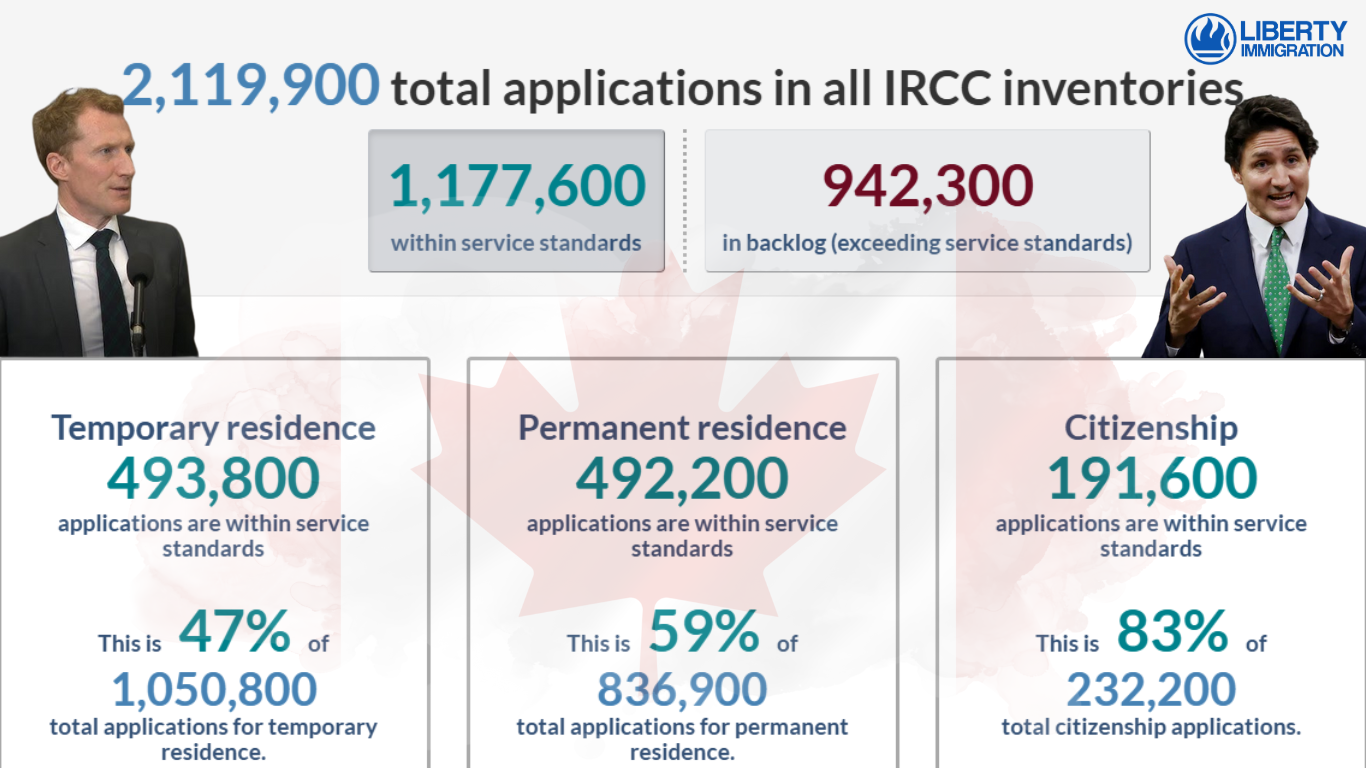IRCC Applications: Overview of Inventories, Backlogs, and Processing Trends in Canada

Immigration, Refugees, and Citizenship Canada (IRCC) plays a pivotal role in managing the influx of applications for permanent residence, citizenship, and temporary residence in Canada. For individuals and families in British Columbia (BC) seeking to navigate the immigration process, understanding IRCC’s application inventories, backlogs, and processing trends is crucial. This article provides an in-depth analysis of IRCC’s performance, backlogs, and projections, tailored to the needs of BC residents.
IRCC Applications at a Glance: Inventories and Backlogs
IRCC manages over 2 million applications at any given time, ensuring Canada meets its annual immigration targets. In 2024, IRCC finalized more than 7 million decisions across its programs. These decisions include applications processed within service standards and those in the backlog—applications that exceed the standard processing times.
Key Statistics (as of December 31, 2024):
- Total applications in IRCC inventories: 2,119,900
- Service standards goal: Process 80% of applications within set timelines.
Managing the Backlog: Challenges and Projections
IRCC aims to process 80% of applications within service standards. However, factors such as application volume, complexity, and unforeseen operational shifts can impact processing times. For instance, a surge in applications or urgent priority changes may lead to increased backlogs.
Backlog Trends (2022–2024):
Below is a comparative analysis of backlogs across key immigration categories:
| Category | 2022 Backlog (%) | 2023 Backlog (%) | 2024 Backlog (%) |
|---|---|---|---|
| Federal High-Skilled (Express Entry) | 34% | 24% | 15% |
| Provincial Nominee Program (PNP) | 32% | 23% | 15% |
| Spouses, Partners, and Children | 30% | 20% | 15% |
| Citizenship Grants | 46% | 25% | 17% |
| Study Permits | 42% | 24% | 17% |
| Work Permits | 38% | 25% | 18% |
Data is approximate and subject to change.
Permanent Residence: Performance and Backlogs
In 2024, IRCC made 559,100 decisions on permanent residence applications, welcoming 483,500 new permanent residents. The backlog for permanent residence applications has shown a steady decline, reflecting IRCC’s efforts to improve processing efficiency.
Backlog Reduction Trends (2022–2024):
- Federal High-Skilled (Express Entry): Backlog decreased from 34% in 2022 to 15% in 2024.
- Provincial Nominee Program (PNP): Backlog reduced from 32% in 2022 to 15% in 2024.
- Spouses, Partners, and Children: Backlog dropped from 30% in 2022 to 15% in 2024.
Citizenship: Welcoming New Canadians
From April 1 to December 31, 2024, IRCC welcomed 270,100 new citizens. The backlog for citizenship grant applications has also seen a significant reduction.
Backlog Reduction Trends (2022–2024):
- Citizenship Grants: Backlog decreased from 46% in 2022 to 17% in 2024.
Temporary Residence: Study and Work Permits
In 2024, IRCC finalized 844,600 study permit applications and 1,301,000 work permit applications. Temporary residence applications, including study and work permits, have experienced fluctuations in backlogs due to varying application volumes.
Backlog Reduction Trends (2022–2024):
- Study Permits: Backlog decreased from 42% in 2022 to 17% in 2024.
- Work Permits: Backlog reduced from 38% in 2022 to 18% in 2024.
Visualizing the Data: Graphs and Trends
To better understand the trends, here’s a graphical representation of backlogs across key categories:
What This Means for British Columbia Residents
For individuals in BC applying for permanent residence, citizenship, or temporary residence, understanding IRCC’s backlog trends can help set realistic expectations. While backlogs have decreased significantly, applicants should prepare for potential delays, especially during peak application periods.
Tips for Applicants:
- Submit Complete Applications: Ensure all required documents are included to avoid delays.
- Monitor Processing Times: Regularly check IRCC’s website for updates on processing times.
- Seek Professional Guidance: Consult with immigration consultants or lawyers to navigate complex cases.
Reputable Resources for Further Reading:
Conclusion
IRCC’s efforts to manage application inventories and reduce backlogs have shown positive results, benefiting applicants across Canada, including those in British Columbia. By staying informed and prepared, BC residents can navigate the immigration process more effectively. For the latest updates, always refer to IRCC’s official resources and trusted immigration advisors.



